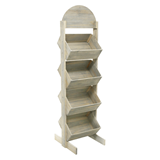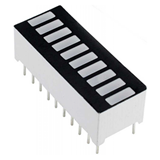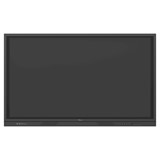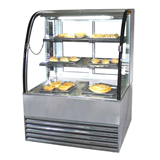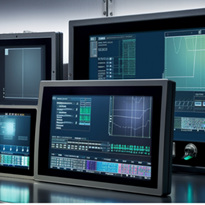HMI (Human-Machine Interface) touchscreens and displays have revolutionized the way we interact with various devices and systems, providing intuitive and user-friendly interfaces. From smartphones and tablets to industrial machinery and control panels, HMI touchscreens enhance user interaction and offer numerous benefits. In this article, we will explore the advantages and benefits of HMI touchscreens and displays in enhancing user interaction.
Intuitive and User-Friendly Interface Design: Enhancing User Interaction
An intuitive and user-friendly interface design is crucial in providing an enjoyable and efficient user experience. Whether it's a mobile app, website, or software application, an interface that is easy to understand and navigate enhances user interaction and satisfaction. In this article, we will explore the principles and best practices for designing intuitive and user-friendly interfaces.
1. Consistency in Design Elements
Consistency is key to creating an intuitive interface. Design elements such as buttons, icons, and menus should have a consistent appearance and behavior throughout the interface. This allows users to quickly understand the purpose and function of each element, reducing confusion and facilitating seamless navigation. Consistency in design elements creates a sense of familiarity and builds user confidence in interacting with the interface.
2. Clear and Meaningful Visual Hierarchy
A clear and meaningful visual hierarchy helps users understand the structure and importance of the information presented. Use visual cues such as size, color, and typography to guide users' attention to key elements or actions. Important information or interactive elements should be visually prominent, while less important or secondary elements should be visually subdued. A well-defined visual hierarchy aids users in quickly grasping the interface's content and enables efficient interaction.
3. User-Centered Information Architecture
Organize information in a user-centered manner to enhance usability. Consider the user's mental model and arrange content and functionality based on their needs and expectations. Group related elements together and provide clear labels or headings to help users locate information easily. Avoid clutter and prioritize the most relevant and frequently used features. User-centered information architecture streamlines the user's path to desired actions and reduces cognitive load.
4. Meaningful and Action-Oriented Feedback
Provide meaningful and action-oriented feedback to guide users through their interactions. When users perform an action, such as clicking a button or submitting a form, provide immediate feedback to confirm that the action has been recognized. This feedback can be visual, such as a button changing color or displaying a loading animation, or textual, such as displaying success or error messages. Feedback reassures users that their actions are registered and helps them understand the system's response.
5. Clarity in Language and Instruction
Use clear and concise language in instructions, labels, and error messages. Avoid jargon or technical terms that may confuse users. Instructions should be straightforward and easy to understand, guiding users on how to perform tasks or complete forms. Error messages should be specific, indicating the problem and suggesting possible solutions. Clear and concise language ensures that users can navigate the interface effectively and complete tasks without frustration.
6. Thoughtful Use of Visual Elements and White Space
Visual elements, such as images, icons, and illustrations, can enhance the user experience when used thoughtfully. Use visuals to convey information or reinforce the interface's purpose, but ensure they are relevant and meaningful. Avoid excessive use of visuals that may overwhelm or distract users. Additionally, leverage white space to create breathing room between elements, providing visual clarity and preventing the interface from appearing cluttered.
7. User Testing and Iterative Design
User testing is essential for validating and refining interface design. Conduct usability tests with representative users to gather feedback on the interface's usability and user experience. Observe how users interact with the interface, identify pain points or areas of confusion, and make iterative improvements based on the feedback received. User testing helps ensure that the interface meets users' needs and expectations, resulting in a more intuitive and user-friendly design.
Improved Efficiency and Productivity in Industrial Processes with HMI touchscreens and Displays
HMI (Human-Machine Interface) touchscreens and displays have significantly transformed industrial processes, offering improved efficiency and productivity in various sectors. With their intuitive interfaces and advanced functionalities, HMI touch screens and displays streamline operations, enhance data visualization, and facilitate seamless interaction between operators and machines. In this article, we will explore how HMI touchscreens and displays contribute to improved efficiency and productivity in industrial processes.
1. Streamlined Operation and Control
HMI touchscreens and displays simplify operation and control of industrial machinery and systems. Operators can interact directly with graphical elements on the touchscreen, such as buttons, sliders, and virtual switches, to initiate actions or adjust parameters. This direct interaction eliminates the need for physical controls or complex panel layouts, reducing operator errors and minimizing the time required to perform tasks. Streamlined operation and control lead to increased efficiency and productivity in industrial processes.
2. Real-Time Data Visualization
HMI touchscreens and displays enable real-time data visualization, providing operators with valuable insights into industrial processes. Through visually appealing and interactive displays, operators can monitor critical parameters, track performance indicators, and identify trends or anomalies promptly. Real-time data visualization allows for proactive decision-making, rapid troubleshooting, and optimization of processes. By having immediate access to accurate and comprehensive information, operators can take timely actions, leading to enhanced efficiency and productivity.
3. Remote Monitoring and Control
HMI touchscreens and displays often support remote monitoring and control capabilities, empowering supervisors, engineers, or maintenance personnel to access and manage industrial processes from remote locations. This remote access eliminates the need for physical presence on the shop floor, saving time and resources. Remote monitoring and control enable quick response to issues, efficient maintenance, and timely adjustments to optimize productivity. It enhances the overall efficiency of industrial processes by enabling real-time interventions and reducing downtime.
4. Integration with Automation Systems
HMI touchscreens and displays seamlessly integrate with automation systems, further enhancing efficiency and productivity. They enable the visualization and control of complex automated processes, such as assembly lines, robotics, or material handling systems. Operators can monitor multiple devices or machines from a centralized interface, simplifying coordination and enabling efficient resource allocation. The integration of HMI touchscreens and displays with automation systems results in synchronized operations, reduced errors, and increased overall productivity.
5. Customization and Flexibility
HMI touchscreens and displays offer customization and flexibility to adapt to specific industrial processes. Interfaces can be tailored to display relevant information, prioritize essential parameters, and accommodate varying user roles. Customizable dashboards, alarms, and reports allow operators to focus on critical aspects of the process, optimizing their decision-making. The flexibility of HMI touchscreens and displays ensures that industrial processes can be effectively monitored, controlled, and managed according to specific requirements, leading to improved efficiency and productivity.
6. Reduced Training Time
The intuitive nature of HMI touchscreens and displays reduces training time for operators. The familiarity of touch-based interaction and the visual representation of information simplify the learning process. Operators can quickly understand and navigate the interface, perform tasks, and access relevant information without extensive training. This reduction in training time allows new operators to become productive more quickly, contributing to improved efficiency in industrial processes.
Customization and Flexibility in HMI Touchscreen Applications
HMI (Human-Machine Interface) touchscreens offer a wide range of customization and flexibility options, allowing for tailored applications that meet specific user and industry requirements. The ability to customize and adapt the interface design, functionality, and features enhances usability, efficiency, and overall user satisfaction. In this article, we will explore the importance and benefits of customization and flexibility in HMI touchscreen applications.
-
User-Centric Interface Design
Customization and flexibility in HMI touchscreen applications enable user-centric interface design. Developers can design interfaces that align with the preferences, workflows, and specific needs of the end users. This user-centric approach ensures that the interface is intuitive, easy to navigate, and tailored to the tasks performed by operators. Customizable layouts, color schemes, and button placements enhance user comfort and productivity, resulting in a more engaging and efficient user experience.
-
Adaptability to Industry Requirements
HMI touchscreens provide flexibility to adapt to various industry requirements. Each industry has its unique processes, terminology, and operational demands. Customization options allow developers to incorporate industry-specific functionalities, terminology, and visual elements into the interface. This adaptability ensures that operators can interact with the touchscreen application seamlessly, reducing the learning curve and optimizing efficiency in specific industrial contexts.
-
Tailored Dashboards and Displays
Customization and flexibility in HMI touchscreen applications enable the creation of tailored dashboards and displays. Operators can access critical information, performance metrics, and process parameters that are relevant to their specific roles and responsibilities. The ability to configure and customize dashboards empowers operators to focus on the most relevant data and key performance indicators, facilitating informed decision-making and efficient monitoring of industrial processes.
-
Adjustable Setpoints and Parameters
HMI touchscreens allow for the customization of setpoints and parameters, providing operators with the flexibility to adjust variables according to specific requirements. This flexibility is particularly valuable in dynamic industrial processes where parameters need to be modified in response to changing conditions or specific production goals. Operators can easily configure setpoints, thresholds, and limits, ensuring optimal performance and responsiveness to varying operational demands.
-
Integration with Existing Systems
Flexibility in HMI touchscreen applications enables seamless integration with existing systems and equipment. Interfaces can be customized to interact with specific automation systems, databases, or protocols, facilitating data exchange and interoperability. This integration optimizes efficiency by eliminating the need for manual data entry, improving accuracy, and enabling real-time access to relevant information. The ability to integrate with existing systems enhances the overall functionality and value of HMI touchscreen applications.
-
Scalability and Future Adaptability
HMI touchscreen applications that offer customization and flexibility are scalable and adaptable to future requirements. As industrial processes evolve, new functionalities, sensors, or devices may be introduced. Customizable interfaces can accommodate these changes, allowing for the addition or modification of features and components as needed. Scalability and future adaptability ensure that HMI touchscreen applications can continue to meet the evolving needs of industries, providing long-term usability and value.
HMI touchscreens and displays revolutionize user interaction by offering intuitive interfaces across various devices and systems. They enhance efficiency, streamline operation and control, enable real-time data visualization, support remote monitoring and control, integrate with automation systems, provide customization and flexibility, reduce training time, and adapt to industry requirements. HMI touch screens and displays improve user experience, productivity, and satisfaction by facilitating seamless interaction and tailored interfaces. They are indispensable tools for enhancing user interaction in diverse applications.


-160x160-state_article-rel-cat.png)


